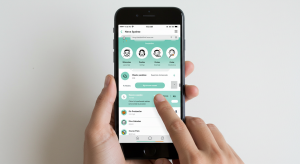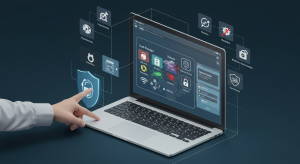Saas delivery refers to a method of providing hosted software applications to clients in a cloud computing environment. In the majority of cases, Saas clients are required to pay a monthly or annual subscription fee to the cloud services provider to continue using a particular software service. Saas delivery is the backbone of an emerging software model that eliminates the need for client organizations to incur the expense of purchasing or maintaining expensive application servers and software. Saas delivery allows organizations to significantly reduce the cost of using and maintaining software because the cloud services provider bears the expense of developing and maintaining the applications and hardware on which the applications run. With Saas delivery, the capital and operational expenses normally associated with hosting on-premise software applications is shifted from the client to the cloud software services provider. The cloud Saas provider is able to spread its capital and operational expenses out across a large customer base.
Dynamics
Saas delivery uses a one-to-many model for software delivery, where a single Saas provider supplies software services to multiple users. Under the Software Service Delivery model, clients are assessed fees based on the types and amount of services used, similar to the way a consumer of electric or water utility services is billed for usage. One key limitation of the Saas delivery model is that it is focused on delivering software applications that have the potential to reach a large market. In order to be profitable, Saas applications have to attract a large customer base, to offset the expenses associated with being a Saas provider in the cloud. Likewise, proprietary mission critical applications are unlikely candidates for the Saas delivery model.
Considerations
Since the Saas delivery model charges customers based on usage, Saas clients need to consider the quality of the account monitoring tools a cloud Saas provider makes available for the services it delivers.
Clients should have the ability to determine when they have exceed their monthly usage for their subscription level. Clients should also have the ability to monitor the usage of individual users on an hour-by-hour and day-by-day basis. Saas clients need to also consider the availability of administrative tools when subscribing to any software application that uses the Saas delivery model.
Client organizations need to have full control over the administration of their users. The same requirement applies to security features, as a client organization should avoid Saas providers that deliver software services with set security models that do not allow the client to determine their own user roles and permissions.
This page is an archive. To learn more about archive pages click here
The responses below are not provided, commissioned, reviewed, approved, or otherwise endorsed by any financial entity or advertiser. It is not the advertiser’s responsibility to ensure all posts and/or questions are answered.


